14 People Who Know What Being a Good Dad Is Really Like

It’s called “The Water Cube” and for good reason. The Beijing National Aquatics Center indeed looks like a cluster of bubbles! And when it lights up at night it’s even more spectacular.
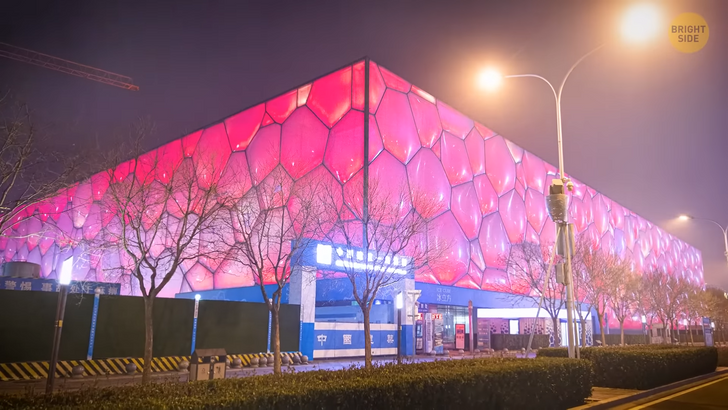
This amazing show of lights led people to compare this stadium with the Bilbao Art Museum, another great example of contemporary and modern design, located in Spain. Back in 2008, this sports center hosted the main events for the swimming, diving, and synchronized swimming Olympics. After the games, the Water Cube was closed for renovations, which aimed to turn a part of the stadium into a water park. Its intricate and creative design is equally as beautiful — with bubbles and jellyfish hanging from the high ceiling!
The construction of the Soccer City Stadium from Johannesburg, in South Africa, started in 1986 but was repurposed for the 2010 World cup. It features 94,000 seats and a unique design, with a facade made out of highly compressed fibrous concrete. This material allows the light to poke through at night, offering sports fans a spectacular view.
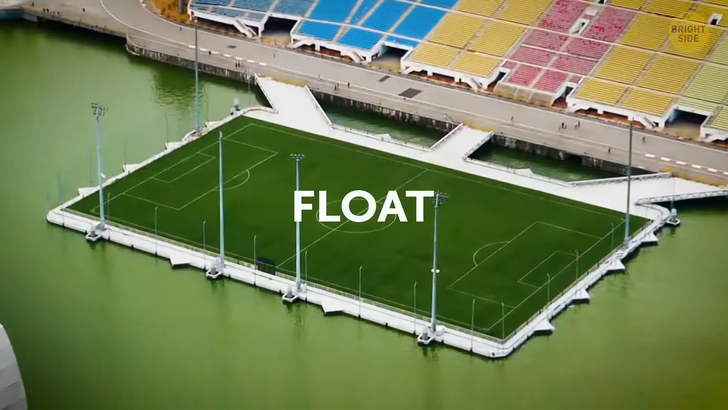
A floating stadium? You’ll need to fly to Singapore for that and visit The Float. It opened in 2007 and hosted parts of the Youth Olympic Games in 2010. To this day, it is the largest floating stage in the world. It features a structure completely made out of steel, and it’s a bit larger than a football pitch. It also has a capacity of 30,000 people, but if you are afraid of water, it may not be the place for you.
Not a stadium per se, sure, but the Burj Al Arab Hotel helipad was for a brief period the world’s tallest tennis court. Two famous tennis players, Roger Federer and Andre Agassi played a couple of amicable rounds up there in the sky, at the 1,053-foot hotel located in Dubai. During the same tennis exhibition events, Roger Federer and Rafael Nadal played the game on water, in Qatar on a partially submerged court.
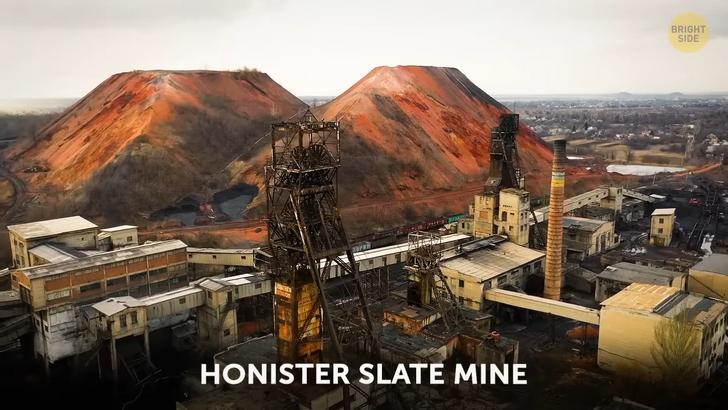
Cricket — the sport, not the insect — may not be as famous as it used to be, but in this interesting location, it is played 2,000 feet underground! A Cumbrian slate mine dubbed the Honister Slate Mine is the host for such an event. And it is located in the North of England. The first match ever happened back in 2013 between two English village teams.
The home of Sweden’s national men’s hockey team is called the Ericsson Globe and you can find it in Stockholm. It seats up to 14,000 fans and is considered the biggest spherical building in the world. The concept surrounding this building centers around our galaxy, the Milky Way, in which The Ericsson Globe is portrayed as the Sun. The architects behind this project designed the entire solar system at a 1:20 million scale. Planets are scattered throughout the city of Stockholm and other regions in Sweden.
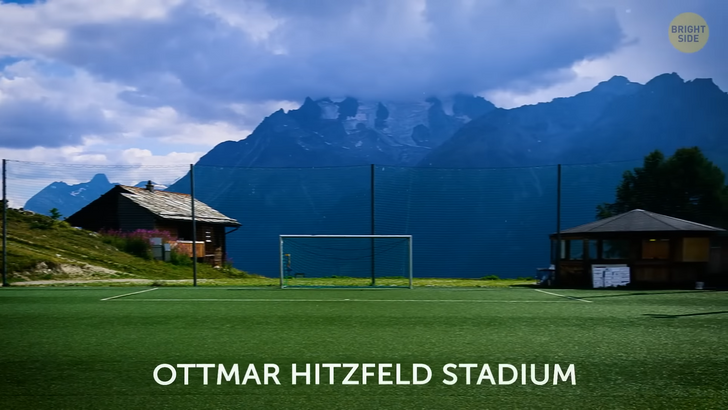
A lot of sports are played in Switzerland, with football, skiing, and ice hockey being fan favorites. But probably the most interesting of them all is polo played on the frozen surface of the lake of St. Moritz — an alpine resort level located at about 6,000 feet above sea level. The icy surface of the lake has even been hosting horse races ever since 1907.
The highest football field in Europe is also in Switzerland, and it is called the Ottmar Hitzfeld Stadium. It stands at a jaw-dropping 6,500 feet above sea level. For those that don’t have a fear of heights, the views are equally as beautiful: the stadium is surrounded by a mountain peak twice as high. Because of the high altitude, Ottmar Hitzfeld Stadium turns into a ski resort during the colder season.

The Faroe Islands are a series of 18 islands located in the North Atlantic Ocean, the midpoint between Iceland and Norway. They are the home of some of the most amazing waterfalls in the world, beautifully-colored cottages, and a tiny sports area called Eidi Stadium — dubbed the most beautiful stadium in the world. It’s almost completely surrounded by water, caught between the Norwegian Sea and Lake Nioara Vatn. Because of this unusual location, it even has an employee whose job is to retrieve the balls that have been accidentally thrown into the sea.
The stunning historic center of the Italian city of Siena is called Piazza del Campo. And twice a year it completely transforms during the Palio di Siena horse race. During the summer months, in July and August, riders and their horses get together, bareback, each dressed in the colors corresponding to the city yards they come from. It’s estimated that about 40,000 people gather around to witness the race each time. For all the pomp and ceremony of the event, the race itself only lasts for a minute and a half — that’s the amount of time needed for the rider to complete 3 laps around the city square.
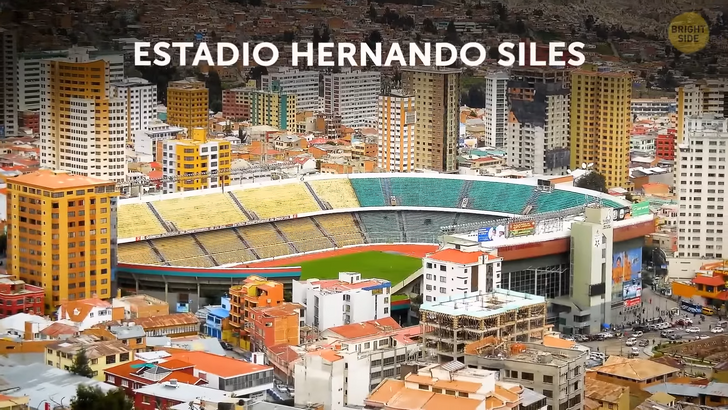
Not all stadiums are famous for their beauty or unique architecture. Estadio Hernando Siles, for example, located in La Paz, Bolivia is the home stadium of the national team — and a delicate subject for some famous football players. It became notorious for being an extremely tough place to play for foreign teams. Mostly because it’s located at 11,932 feet above sea level.
Up there, the air is so thin, some find it really challenging to catch their breaths during a match. Lionel Messi was said to have gotten sick here during a World Cup qualifier in 2013, because of altitude sickness. Another famous player mentioned in 2017 that he needed an oxygen mask to play and even called the place inhumane for sports fans and athletes.
Home to one of Europe’s most profitable football clubs — Real Madrid — is The Santiago Bernabéu stadium. The team has a whooping nine European titles in their portfolio! It was opened back in 1947 and has been renovated twice, in 1982 and 2001. It may not be impressive due to its architecture or size by any means, but it has seen in action some of the best football players in history: Ferenc Puskás, Zinedine Zidane or Cristiano Ronaldo.
Probably the most iconic football venue in the world is Wembley Stadium — located in the United Kingdom. It also has an impressive capacity, being able to host around 90,000 people. Dubbed “The home of football”, it’s the largest sports area in the UK and the second-largest stadium in Europe. Wembley is also known for its incredible entertainment.
The band Queen made history here during their 1986 concert. In 2017, Adele broke the record for highest attendance during a show — with 98,000 people gathering to see her perform. The reason why a lot of artists love performing here so much is that the acoustics are really special: crowd recordings were used as audio benchmarks by a design team, which then combined sophisticated computer models with the unique architecture of the stadium to give way for the perfect audio experience.
But this stadium wasn’t always as it is today. It was completely demolished in 2003 and the fact that people had to say goodbye to the initial white twin towers didn’t sit well with all the fans. On the other hand, since there is an arch now supporting the roof, there are no stick pillars anymore, which means better views for a lot more people.











